
John Morgan
@jwmorganecology.bsky.social
I am a plant ecologist interested in long-term dynamics, patterns of diversity, conservation management, botany, landscape change, native grasslands, neat experiments
Reposted by John Morgan
🌱 New research from The Australian PlantBank reveals how 4 threatened Australian Grevillea species respond to temperature changes. Good news, 3 species show resilience to future warming, but G. iaspicula prefers cooler conditions & may struggle with climate change.
Read more 🔗 buff.ly/b4pbbgv
Read more 🔗 buff.ly/b4pbbgv

September 10, 2025 at 6:01 AM
🌱 New research from The Australian PlantBank reveals how 4 threatened Australian Grevillea species respond to temperature changes. Good news, 3 species show resilience to future warming, but G. iaspicula prefers cooler conditions & may struggle with climate change.
Read more 🔗 buff.ly/b4pbbgv
Read more 🔗 buff.ly/b4pbbgv
Reposted by John Morgan
Riverbank erosion in SW Australia exposed previously undocumented root clusters in Kingia australis. Research by Lamont et al. suggests these novel 'kingioid roots' enhance water and nutrient uptake rather than storage, linking with seasonal root-cluster types🫚
Paper here 🔗 buff.ly/Hi3BxLE
Paper here 🔗 buff.ly/Hi3BxLE

September 3, 2025 at 4:42 AM
Riverbank erosion in SW Australia exposed previously undocumented root clusters in Kingia australis. Research by Lamont et al. suggests these novel 'kingioid roots' enhance water and nutrient uptake rather than storage, linking with seasonal root-cluster types🫚
Paper here 🔗 buff.ly/Hi3BxLE
Paper here 🔗 buff.ly/Hi3BxLE
Reposted by John Morgan
Shaopeng Wang will present the next PopBio seminar:
"Biodiversity and Ecosystem Stability Across Spatial and Temporal Scales"
Join us online, Thursday August 28 1pm AEST. These seminars are open to all!
Sign up to our mailing list to receive the zoom link: forms.gle/uRJwbK1ZacZH...
"Biodiversity and Ecosystem Stability Across Spatial and Temporal Scales"
Join us online, Thursday August 28 1pm AEST. These seminars are open to all!
Sign up to our mailing list to receive the zoom link: forms.gle/uRJwbK1ZacZH...

August 21, 2025 at 1:18 PM
Shaopeng Wang will present the next PopBio seminar:
"Biodiversity and Ecosystem Stability Across Spatial and Temporal Scales"
Join us online, Thursday August 28 1pm AEST. These seminars are open to all!
Sign up to our mailing list to receive the zoom link: forms.gle/uRJwbK1ZacZH...
"Biodiversity and Ecosystem Stability Across Spatial and Temporal Scales"
Join us online, Thursday August 28 1pm AEST. These seminars are open to all!
Sign up to our mailing list to receive the zoom link: forms.gle/uRJwbK1ZacZH...
Reposted by John Morgan
African lovegrass (Eragrostis curvula) is a fast growing, aggressive invasive species in Australia & North America. Early trials to control this agressive invader in the biodiversity hotspot of SW Australia are promising, writes Carl R. Gosper & colleagues #openaccess OA 🔗➡️

Control of African lovegrass by flupropanate in a flora conservation context
Context Managing widespread invasive plants to support biodiversity conservation is a significant challenge that requires weed control methods that have lesser impacts on co-occurring native species…
doi.org
August 21, 2025 at 11:11 PM
African lovegrass (Eragrostis curvula) is a fast growing, aggressive invasive species in Australia & North America. Early trials to control this agressive invader in the biodiversity hotspot of SW Australia are promising, writes Carl R. Gosper & colleagues #openaccess OA 🔗➡️
Reposted by John Morgan
A new journal category: Reflections. We're inviting reviews authored by research field leaders to reflect on a topic of their choosing, exploring the history of and provide context for the current state of our discipline. Our first guest is Prof. Mark Westoby #openaccess

Trajectories of ecology past and future
Ecosystems have many different processes going on. Researchers need to select and simplify, and so development of ecology as a discipline has involved finding different possible ways to select and…
doi.org
August 21, 2025 at 11:17 PM
A new journal category: Reflections. We're inviting reviews authored by research field leaders to reflect on a topic of their choosing, exploring the history of and provide context for the current state of our discipline. Our first guest is Prof. Mark Westoby #openaccess
Reposted by John Morgan
What can #herbarium collections tell us about genetic responses to global change? A lot!! 🌿
Check out our viewpoint, out now in @newphyt.bsky.social - genetic monitoring, extinctions, adaptation, GEAs, and more! ⬇️
doi.org/10.1111/nph....
Check out our viewpoint, out now in @newphyt.bsky.social - genetic monitoring, extinctions, adaptation, GEAs, and more! ⬇️
doi.org/10.1111/nph....

Using herbarium collections to study genetic responses to global change
Earth's c. 406 million herbarium specimens represent a largely untapped resource of genetic data that could transform our understanding of global plant populations. Advances in DNA sequencing have ma...
doi.org
August 11, 2025 at 12:26 PM
What can #herbarium collections tell us about genetic responses to global change? A lot!! 🌿
Check out our viewpoint, out now in @newphyt.bsky.social - genetic monitoring, extinctions, adaptation, GEAs, and more! ⬇️
doi.org/10.1111/nph....
Check out our viewpoint, out now in @newphyt.bsky.social - genetic monitoring, extinctions, adaptation, GEAs, and more! ⬇️
doi.org/10.1111/nph....
Reposted by John Morgan
Fire in focus: Clarifying metrics & terminology for better ecological insight 🔥🧪
This framework can help researchers & practitioners to
👉select fire metrics for research & management 📊
👉interpret previous studies 💭
👉form a growing body of knowledge 🌏
🔗 doi.org/10.1111/1365...
This framework can help researchers & practitioners to
👉select fire metrics for research & management 📊
👉interpret previous studies 💭
👉form a growing body of knowledge 🌏
🔗 doi.org/10.1111/1365...

doi.org
August 12, 2025 at 1:03 PM
Fire in focus: Clarifying metrics & terminology for better ecological insight 🔥🧪
This framework can help researchers & practitioners to
👉select fire metrics for research & management 📊
👉interpret previous studies 💭
👉form a growing body of knowledge 🌏
🔗 doi.org/10.1111/1365...
This framework can help researchers & practitioners to
👉select fire metrics for research & management 📊
👉interpret previous studies 💭
👉form a growing body of knowledge 🌏
🔗 doi.org/10.1111/1365...
Reposted by John Morgan
Increasing the number of anthropogenic stressors reduces the effects of plant diversity.
A study by Yanjie Zhu, et al. represents a first attempt to address the effect of plant diversity under multiple stressors.
📖 nph.onlinelibrary.wiley.com/doi/10.1111/...
@mrillig.bsky.social #LatestIssue
A study by Yanjie Zhu, et al. represents a first attempt to address the effect of plant diversity under multiple stressors.
📖 nph.onlinelibrary.wiley.com/doi/10.1111/...
@mrillig.bsky.social #LatestIssue
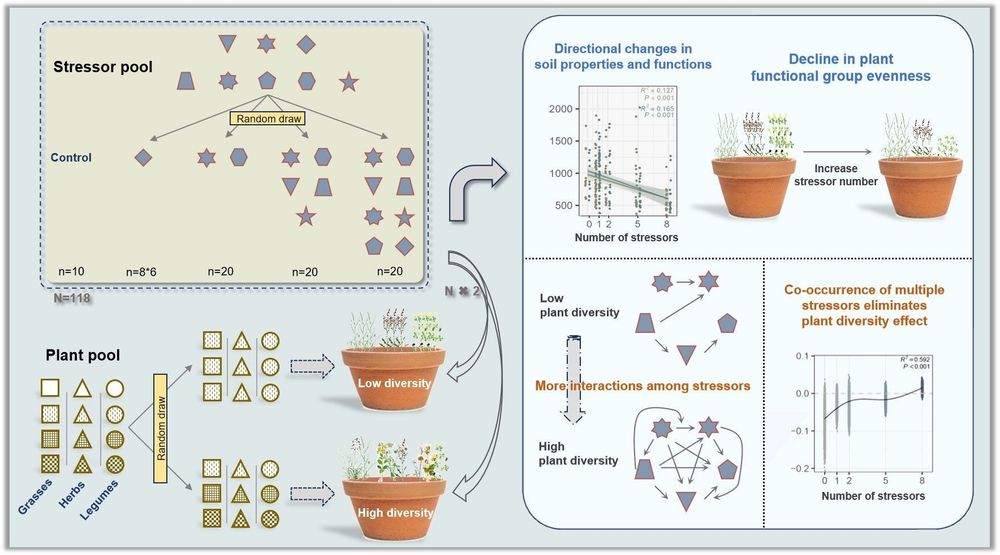
July 18, 2025 at 11:02 AM
Increasing the number of anthropogenic stressors reduces the effects of plant diversity.
A study by Yanjie Zhu, et al. represents a first attempt to address the effect of plant diversity under multiple stressors.
📖 nph.onlinelibrary.wiley.com/doi/10.1111/...
@mrillig.bsky.social #LatestIssue
A study by Yanjie Zhu, et al. represents a first attempt to address the effect of plant diversity under multiple stressors.
📖 nph.onlinelibrary.wiley.com/doi/10.1111/...
@mrillig.bsky.social #LatestIssue
Reposted by John Morgan
Herbarium specimens reveal drivers of Arctic shrub growth @newphyt.bsky.social
Shrub specimens can be used to recreate annual growth chronologies and help understand plant responses to global change.
With @annebeejay.bsky.social, ZA Panchen, JDM Speed
nph.onlinelibrary.wiley.com/doi/10.1111/...
Shrub specimens can be used to recreate annual growth chronologies and help understand plant responses to global change.
With @annebeejay.bsky.social, ZA Panchen, JDM Speed
nph.onlinelibrary.wiley.com/doi/10.1111/...
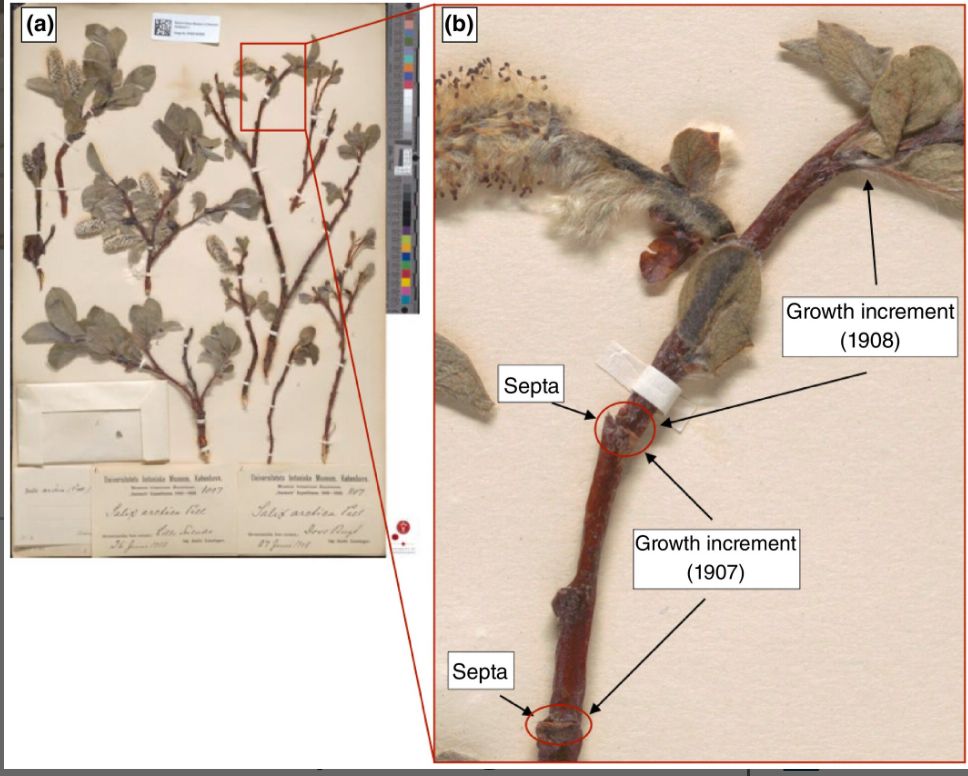
June 10, 2025 at 1:25 PM
Herbarium specimens reveal drivers of Arctic shrub growth @newphyt.bsky.social
Shrub specimens can be used to recreate annual growth chronologies and help understand plant responses to global change.
With @annebeejay.bsky.social, ZA Panchen, JDM Speed
nph.onlinelibrary.wiley.com/doi/10.1111/...
Shrub specimens can be used to recreate annual growth chronologies and help understand plant responses to global change.
With @annebeejay.bsky.social, ZA Panchen, JDM Speed
nph.onlinelibrary.wiley.com/doi/10.1111/...
Reposted by John Morgan
Long-term flowering-time data on Japanese mountain cherry (recorded since the 9th century!) shows a shift in full-flowering date beginning in the late 19th century.
Fascinating new @newphyt.bsky.social paper by @jgpausas.bsky.social
onlinelibrary.wiley.com/doi/abs/10.1...
Fascinating new @newphyt.bsky.social paper by @jgpausas.bsky.social
onlinelibrary.wiley.com/doi/abs/10.1...
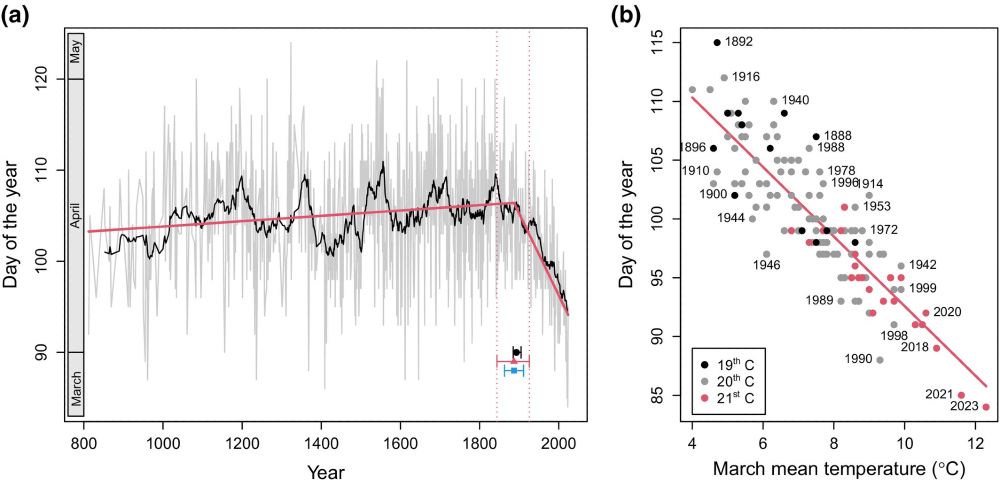
June 16, 2025 at 1:57 PM
Long-term flowering-time data on Japanese mountain cherry (recorded since the 9th century!) shows a shift in full-flowering date beginning in the late 19th century.
Fascinating new @newphyt.bsky.social paper by @jgpausas.bsky.social
onlinelibrary.wiley.com/doi/abs/10.1...
Fascinating new @newphyt.bsky.social paper by @jgpausas.bsky.social
onlinelibrary.wiley.com/doi/abs/10.1...
Reposted by John Morgan
Nature-friendly farming boosts both biodiversity and crop yields — but scaling it up may need more government subsidies to become as profitable as intensive agriculture, a new study led by UKCEH and @rothamsted.bsky.social has found
www.ceh.ac.uk/press/nature...
🧵🧪 1/
www.ceh.ac.uk/press/nature...
🧵🧪 1/
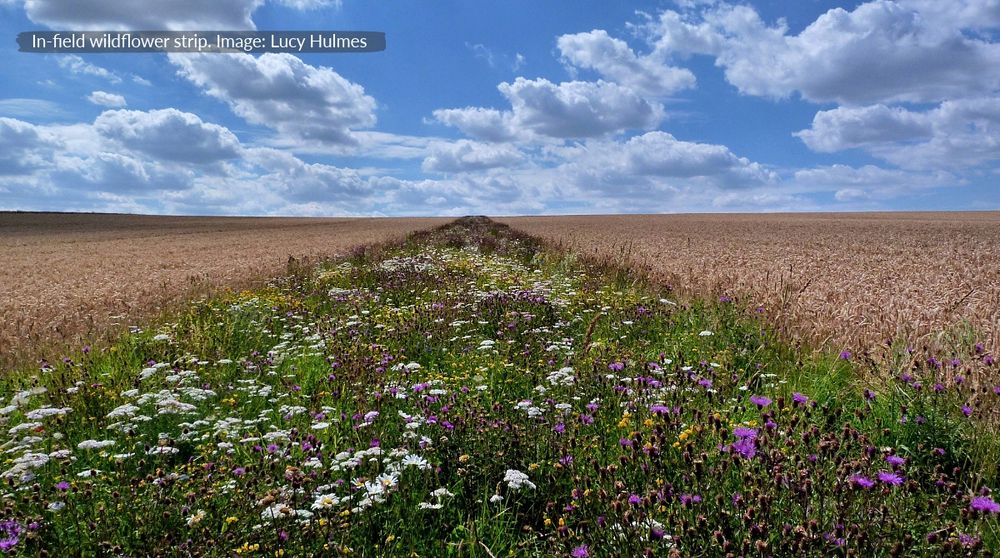
July 2, 2025 at 8:32 AM
Nature-friendly farming boosts both biodiversity and crop yields — but scaling it up may need more government subsidies to become as profitable as intensive agriculture, a new study led by UKCEH and @rothamsted.bsky.social has found
www.ceh.ac.uk/press/nature...
🧵🧪 1/
www.ceh.ac.uk/press/nature...
🧵🧪 1/
Reposted by John Morgan
In New Caledonia’s rainforests, the rare monocarpic tree Cerberiopsis candelabra may owe its success to fast seasonal growth and high juvenile survival. Salmon et al. tracked 134 individuals for 18 months, revealing traits that may help them thrive after disturbance 🌱
🔗Read more: buff.ly/CUN2V5V
🔗Read more: buff.ly/CUN2V5V

July 2, 2025 at 3:00 AM
In New Caledonia’s rainforests, the rare monocarpic tree Cerberiopsis candelabra may owe its success to fast seasonal growth and high juvenile survival. Salmon et al. tracked 134 individuals for 18 months, revealing traits that may help them thrive after disturbance 🌱
🔗Read more: buff.ly/CUN2V5V
🔗Read more: buff.ly/CUN2V5V
Reposted by John Morgan
Excited to see our paper now published in Methods in Ecology and Evolution @methodsinecoevol.bsky.social ! 🎉
doi.org/10.1111/2041...
doi.org/10.1111/2041...
Preprint alert!🚨 You want biomass data without clipping the vegetation? Use your smartphone for a 3D scan! In our manuscript you get instructions & a complete Jupyter notebook for immediate use! doi.org/10.32942/X2T... 🪴+📱=💚 #biodiversity #ecology #globalchange #photogrammetry
June 19, 2025 at 7:18 AM
Excited to see our paper now published in Methods in Ecology and Evolution @methodsinecoevol.bsky.social ! 🎉
doi.org/10.1111/2041...
doi.org/10.1111/2041...
Reposted by John Morgan
We're delighted to announce the reappointment of @jwmorganecology.bsky.social and @markooiecol.bsky.social as Co-Editors-in-Chief of Australian Journal of Botany!
Their continued leadership ensures the journal remains at the forefront of botanical research in Australia and beyond 🌱 📖
Their continued leadership ensures the journal remains at the forefront of botanical research in Australia and beyond 🌱 📖

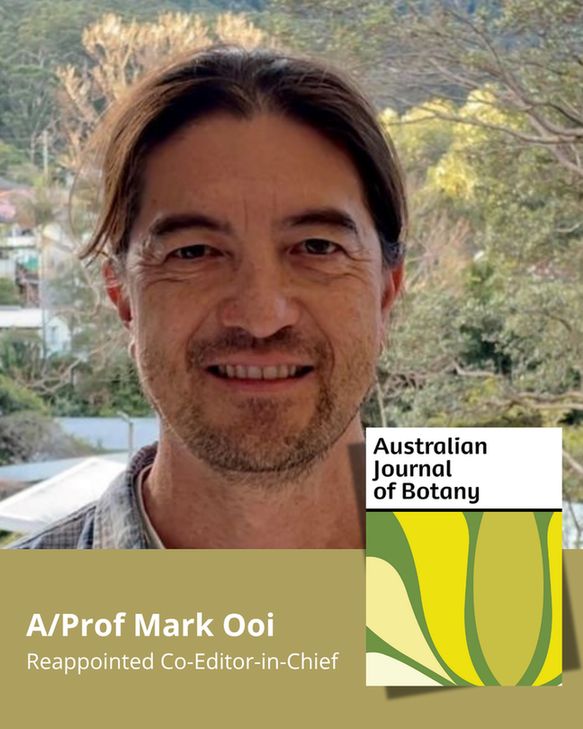
June 13, 2025 at 2:27 AM
We're delighted to announce the reappointment of @jwmorganecology.bsky.social and @markooiecol.bsky.social as Co-Editors-in-Chief of Australian Journal of Botany!
Their continued leadership ensures the journal remains at the forefront of botanical research in Australia and beyond 🌱 📖
Their continued leadership ensures the journal remains at the forefront of botanical research in Australia and beyond 🌱 📖
Reposted by John Morgan
Here's a hot tip!
Long term studies and monitoring of #threatenedspecies is a must to support decision making on adaptive #fire management strategies
Something to remember this #WorldEnvironmentDay
Read more here buff.ly/PfrEzQX
@PacificConsBio.bsky.social
Long term studies and monitoring of #threatenedspecies is a must to support decision making on adaptive #fire management strategies
Something to remember this #WorldEnvironmentDay
Read more here buff.ly/PfrEzQX
@PacificConsBio.bsky.social

A review of 60 years of fire management for threatened fauna and flora at Two Peoples Bay Nature Reserve, Western Australia
Context Two Peoples Bay Nature Reserve in Western Australia has a long history of ecological studies and adaptive fire management. This provides an excellent opportunity to assess the effects of fire…
www.publish.csiro.au
June 5, 2025 at 11:14 AM
Here's a hot tip!
Long term studies and monitoring of #threatenedspecies is a must to support decision making on adaptive #fire management strategies
Something to remember this #WorldEnvironmentDay
Read more here buff.ly/PfrEzQX
@PacificConsBio.bsky.social
Long term studies and monitoring of #threatenedspecies is a must to support decision making on adaptive #fire management strategies
Something to remember this #WorldEnvironmentDay
Read more here buff.ly/PfrEzQX
@PacificConsBio.bsky.social
Reposted by John Morgan
The germination success of tussock grass #Themeda triandra, a keystone species of many #grassland #ecosystems is hampered by variable seed quality and a lack of standardised germination protocols, according to Marne Durnin and colleagues from University of Adelaide 🌱 doi.org/10.1071/BT24...

Variable seed quality hampers the use of Themeda triandra (Poaceae) for seed production, agriculture, research and restoration: a review
Themeda triandra (Forssk.) is a tussock grass of international importance for its keystone role in grassy ecosystems and, hence, is often a focus for seed production, research and ecological…
doi.org
June 6, 2025 at 7:31 AM
The germination success of tussock grass #Themeda triandra, a keystone species of many #grassland #ecosystems is hampered by variable seed quality and a lack of standardised germination protocols, according to Marne Durnin and colleagues from University of Adelaide 🌱 doi.org/10.1071/BT24...
Reposted by John Morgan
Soil-born fungi infects seeds and reduces germination success of Nassella trichotoma (serrated tussock), an invasive species in Australia, New Zealand and South Africa. Bárbara Angeletti and colleagues. doi.org/10.1071/BT24....

Fungi associated with seeds of the invasive grass Nassella trichotoma (serrated tussock) in its native range as prospective biological control agents
Context The South American grass Nassella trichotoma (serrated tussock) is widely distributed in central Argentina and one of the most damaging invasive species in Australia, New Zealand, and South…
doi.org
May 30, 2025 at 7:50 AM
Soil-born fungi infects seeds and reduces germination success of Nassella trichotoma (serrated tussock), an invasive species in Australia, New Zealand and South Africa. Bárbara Angeletti and colleagues. doi.org/10.1071/BT24....
Reposted by John Morgan
It’s alive! Our Mycorrhizal Networks special issue is out in Functional Ecology.
Packed with spore-tacular science.
A collection that highlights advances, identifies unresolved questions & the future research directions.
besjournals.onlinelibrary.wiley.com/doi/10.1111/...
Packed with spore-tacular science.
A collection that highlights advances, identifies unresolved questions & the future research directions.
besjournals.onlinelibrary.wiley.com/doi/10.1111/...
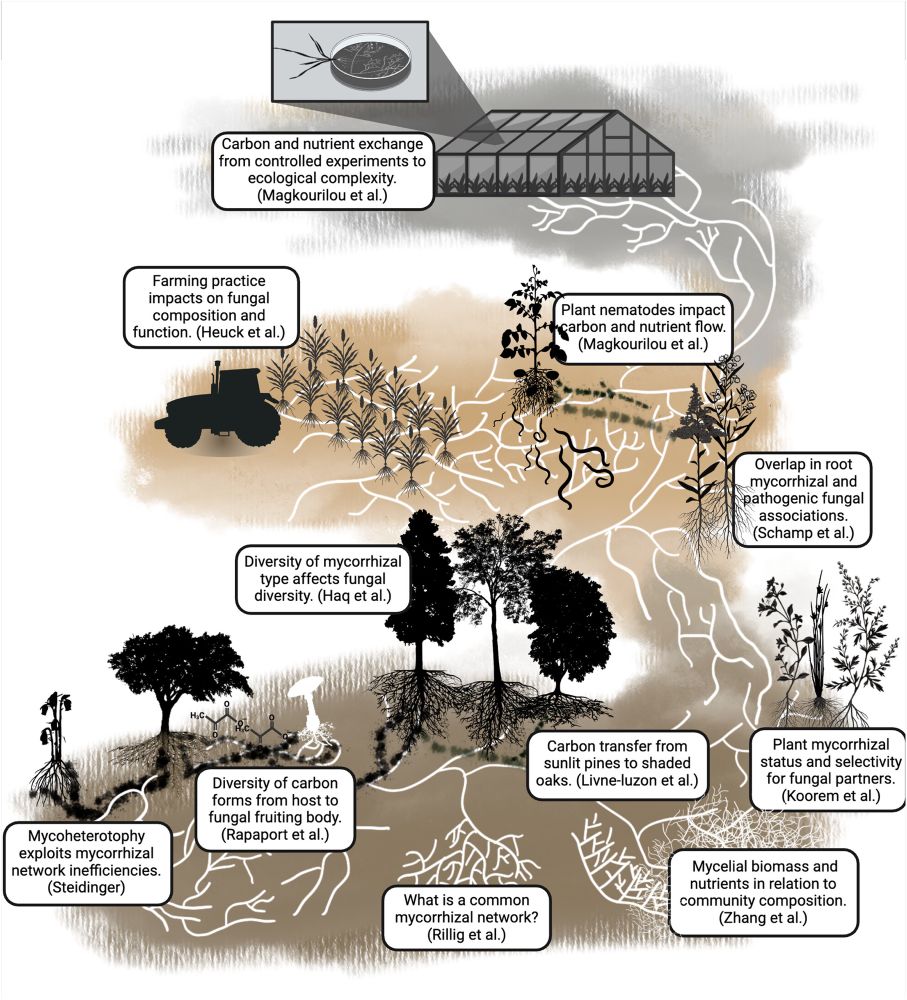
Mycorrhizal networks: Understanding hidden complexity
Read the free Plain Language Summary for this article on the Journal blog.
besjournals.onlinelibrary.wiley.com
June 4, 2025 at 5:10 PM
It’s alive! Our Mycorrhizal Networks special issue is out in Functional Ecology.
Packed with spore-tacular science.
A collection that highlights advances, identifies unresolved questions & the future research directions.
besjournals.onlinelibrary.wiley.com/doi/10.1111/...
Packed with spore-tacular science.
A collection that highlights advances, identifies unresolved questions & the future research directions.
besjournals.onlinelibrary.wiley.com/doi/10.1111/...
Reposted by John Morgan
Join us online this Thursday 1pm AEST.
Hye Jin Park @hyejinpark.bsky.social (Inha University) will present:
"Artificial selection for collective composition"
Sign up to receive the zoom link forms.gle/53hkcdcKPGfa...
NB. This seminar won't be recorded.
Hye Jin Park @hyejinpark.bsky.social (Inha University) will present:
"Artificial selection for collective composition"
Sign up to receive the zoom link forms.gle/53hkcdcKPGfa...
NB. This seminar won't be recorded.
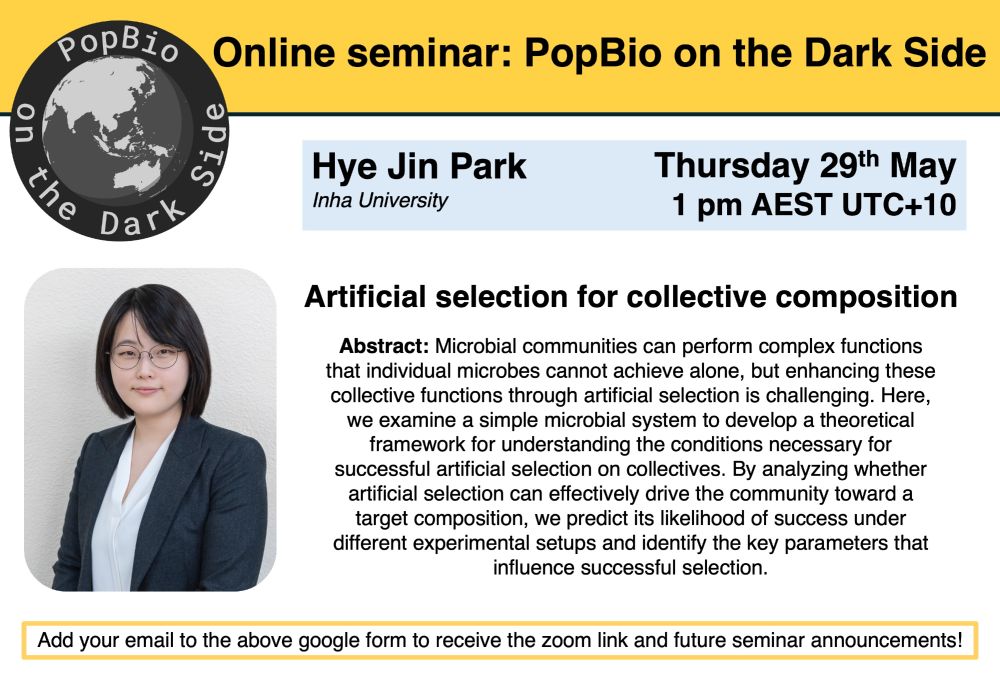
May 27, 2025 at 12:48 AM
Join us online this Thursday 1pm AEST.
Hye Jin Park @hyejinpark.bsky.social (Inha University) will present:
"Artificial selection for collective composition"
Sign up to receive the zoom link forms.gle/53hkcdcKPGfa...
NB. This seminar won't be recorded.
Hye Jin Park @hyejinpark.bsky.social (Inha University) will present:
"Artificial selection for collective composition"
Sign up to receive the zoom link forms.gle/53hkcdcKPGfa...
NB. This seminar won't be recorded.
Reposted by John Morgan
📰Published📰 Flower early, flower fast: Flowering time is conditioned by plant traits under climate change in the Mediterranean🌼
buff.ly/Z3JVVBi
🧪🌍
buff.ly/Z3JVVBi
🧪🌍

Flower early, flower fast: Fowering time is conditioned by plant traits under climate change in the Mediterranean.
Daniel Pareja-Bonilla, Pedro Luis Ortiz, Leonor Patrícia Cerdeira Morellato, Montserrat Arista This is a plain language summary of a Functional Ecology research article which can be found here. Cli…
buff.ly
May 21, 2025 at 11:00 AM
📰Published📰 Flower early, flower fast: Flowering time is conditioned by plant traits under climate change in the Mediterranean🌼
buff.ly/Z3JVVBi
🧪🌍
buff.ly/Z3JVVBi
🧪🌍
Reposted by John Morgan
Quantifying the life history (fire tolerance) of six shrub and tree species reveals the historical, highly variable fire history of #banksia #woodlands in south-western #westernaustralia, according to Russel Miller and colleagues from @murdoch.edu.au doi.org/10.1071/BT23...

Plant life-history data as evidence of an historical mixed-severity fire regime in Banksia Woodlands
Context The concept of the fire regime is central to understanding and managing fire-prone ecosystems globally, and information on past regimes can provide useful insights into species disturbance…
doi.org
May 23, 2025 at 6:06 AM
Quantifying the life history (fire tolerance) of six shrub and tree species reveals the historical, highly variable fire history of #banksia #woodlands in south-western #westernaustralia, according to Russel Miller and colleagues from @murdoch.edu.au doi.org/10.1071/BT23...
Reposted by John Morgan
🔥Climate change is reshaping Arctic tundra ecosystems, with increasing fire frequency being one factor. New research highlights potential transitions and alternative ecosystem states and their implications 🧪🌍
🔍 Article: buff.ly/DsVgOiH
🗞️ Blog: buff.ly/nK6qVOX
🔍 Article: buff.ly/DsVgOiH
🗞️ Blog: buff.ly/nK6qVOX

Arctic tundra ecosystems under fire—Alternative ecosystem states in a changing climate?
buff.ly
May 15, 2025 at 2:20 PM
🔥Climate change is reshaping Arctic tundra ecosystems, with increasing fire frequency being one factor. New research highlights potential transitions and alternative ecosystem states and their implications 🧪🌍
🔍 Article: buff.ly/DsVgOiH
🗞️ Blog: buff.ly/nK6qVOX
🔍 Article: buff.ly/DsVgOiH
🗞️ Blog: buff.ly/nK6qVOX
Reposted by John Morgan
We're excited to welcome Pacific Conservation Biology to Bluesky 🦋
Follow @pacificconsbio.bsky.social for research into the region's conservation issues, and the priorities and mechanisms for conservation oriented biological research.
#PacificConsBio @scboceania.org
Follow @pacificconsbio.bsky.social for research into the region's conservation issues, and the priorities and mechanisms for conservation oriented biological research.
#PacificConsBio @scboceania.org

May 16, 2025 at 3:08 AM
We're excited to welcome Pacific Conservation Biology to Bluesky 🦋
Follow @pacificconsbio.bsky.social for research into the region's conservation issues, and the priorities and mechanisms for conservation oriented biological research.
#PacificConsBio @scboceania.org
Follow @pacificconsbio.bsky.social for research into the region's conservation issues, and the priorities and mechanisms for conservation oriented biological research.
#PacificConsBio @scboceania.org
Reposted by John Morgan
🌩️ New Research Alert! 🌱
How does lightning impact wildfire dynamics in Tasmania? This study identifies key drivers of lightning-ignited wildfires, Explore how treeless landscapes and dry fuels amplify fire risk in the Tasmanian World Heritage Area.
📖 doi.org/10.1071/WF24...
#IJWildlandFire
How does lightning impact wildfire dynamics in Tasmania? This study identifies key drivers of lightning-ignited wildfires, Explore how treeless landscapes and dry fuels amplify fire risk in the Tasmanian World Heritage Area.
📖 doi.org/10.1071/WF24...
#IJWildlandFire

May 16, 2025 at 6:27 AM
🌩️ New Research Alert! 🌱
How does lightning impact wildfire dynamics in Tasmania? This study identifies key drivers of lightning-ignited wildfires, Explore how treeless landscapes and dry fuels amplify fire risk in the Tasmanian World Heritage Area.
📖 doi.org/10.1071/WF24...
#IJWildlandFire
How does lightning impact wildfire dynamics in Tasmania? This study identifies key drivers of lightning-ignited wildfires, Explore how treeless landscapes and dry fuels amplify fire risk in the Tasmanian World Heritage Area.
📖 doi.org/10.1071/WF24...
#IJWildlandFire
Reposted by John Morgan
New paper out on the impacts of fire on 5 small vertebrates across SE Australia.
High severity fire has a substantial impact on threatened broad-toothed rats and glossy grass skinks.
We also highlight the importance of habitat refuges for ameliorating impacts of recurrent fires.
High severity fire has a substantial impact on threatened broad-toothed rats and glossy grass skinks.
We also highlight the importance of habitat refuges for ameliorating impacts of recurrent fires.
New paper, led by @dadriscoll.bsky.social.
• High fire severity caused precipitous declines of two threatened species.
• Protecting or creating refuges is critical to counter increasingly frequent fires.
www.sciencedirect.com/science/arti...
• High fire severity caused precipitous declines of two threatened species.
• Protecting or creating refuges is critical to counter increasingly frequent fires.
www.sciencedirect.com/science/arti...

Megafire severity, fire frequency and their interactions with habitat affect post-fire responses of small mammal and reptile species
Climate change is driving extreme fires in many ecosystems around the world. There is an urgent need to understand how co-occurring and interacting th…
www.sciencedirect.com
May 1, 2025 at 3:48 AM
New paper out on the impacts of fire on 5 small vertebrates across SE Australia.
High severity fire has a substantial impact on threatened broad-toothed rats and glossy grass skinks.
We also highlight the importance of habitat refuges for ameliorating impacts of recurrent fires.
High severity fire has a substantial impact on threatened broad-toothed rats and glossy grass skinks.
We also highlight the importance of habitat refuges for ameliorating impacts of recurrent fires.

